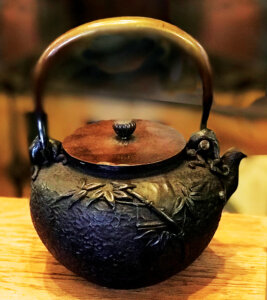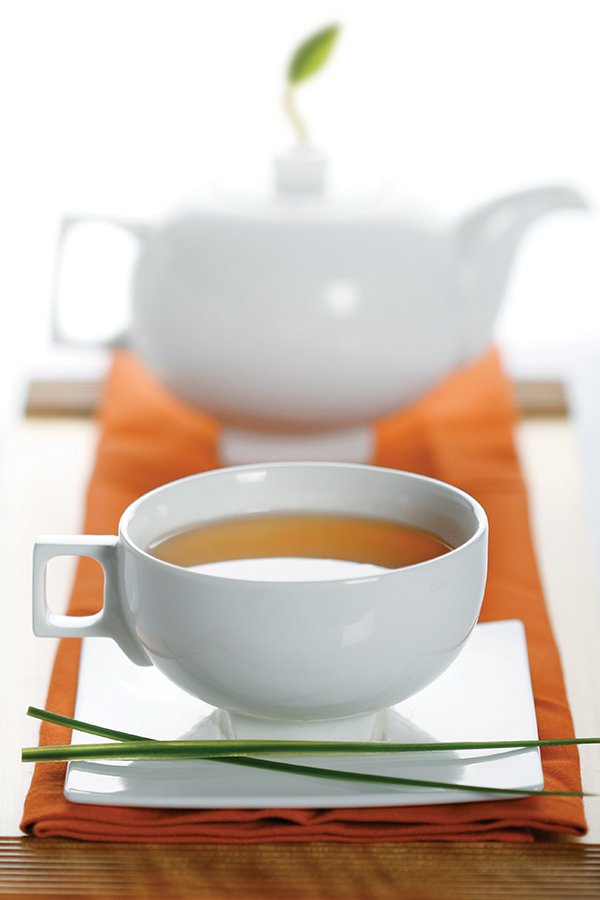Secrets of an ancient tradition transform the simple act of drinking a cup of tea with a blend of balance and harmony.
Tea has been enjoyed for thousands of years. First appreciated in China, the benefits and pleasures of this simple drink traveled around the globe, growing in popularity to become one of the world’s most favorite beverages, second only to water. Cultures from every corner of the globe have created ceremonies and traditions around preparing, serving, and drinking tea.
Yet one thing has always remained the same—whether sipped from a fine china cup, a gently worn mug, or an Australian ‘billy can’—a simple cup of tea can have the power to melt away the stresses of the day.
The most well-known among all the different customs surrounding tea was developed by the Japanese and has come to be known as the Tea Ceremony. Actually, the translation of this ancient custom is more properly understood as The Dao or The Way of Tea.

The Japanese formulated strict rules of etiquette concerning the methods and elements of preparing and drinking tea, elevating it into a highly stylized art form embodying the Zen philosophies of harmony and tranquility. Tea schools were created, and the drive to create the perfect experience was often considered paramount.
But as the great sixteenth-century tea master Sen no Rikyu was quick to remind his followers, ‘The way of tea is just to boil water, make tea and only drink it . . . this you should know.’
When Benjamin Franklin visited Japan in 1779 he became familiar with their ritual tea ceremony and wrote home about his vision of Americans creating their own tea ceremony. ‘On this island, where tea is as well-loved as in England, the men have a ceremony very strange and fixed by ancient custom. Might not Americans soon develop their own native distinctions, as strange to their fellowes?’
Although history may lead us to believe that Americans replaced tea with coffee after that famous tossing of the tea into the Boston Harbor, tea actually continued to be the preferred drink here, and by the time the eighteenth century came to an end, English porcelain tea sets were a part of every proper household. Eastern influences are still found in much of the tea literature that abounds, but it was Bostonian Isabella Stuart Gardener who developed what came to be known as The New England Practice, thereby bringing an American Tea Ceremony into fashion.
From guidelines in a Gardener Tea Ceremony Pamphlet, we see that Franklin’s musings about an Americanized version of the Tea Ceremony were eventually realized.
Drinking tea in America became a far less formal affair, to be enjoyed by everyone, at any time.

Hosts were encouraged to use mismatched cups since “the goal of the ceremony is to create lightness. America is a land of effortless variety, so an ideal setting would contain glass, plastic, clay, and enamel without seeming contrived.” Comparing it to the Asian ceremonies, Gardener’s guidelines explain, “Unlike Japan, there exists no native tea architecture. Ceremonies can be held in any room of the house where guests can be made comfortable; dining room, kitchen, parlor.”
Tea continues to be a warm invitation to everyone, from visiting heads of state, to next-door neighbors, or unexpected guests. The only rule that most agree should be observed is that it should be regarded as a “time-out,” as it were, and should never be rushed.
The Way of Tea, as Rikyu reminds us, is not so much about what you are drinking, as it is about your state of mind while you enjoy your favorite brew.

In fact, it may very well be that it is the actual act of slowing down to prepare and drink a cup of tea that yields its greatest benefits.
From the formalized Japanese Way of Tea to the casual American Ceremony, there is a calming nature to the ritual of putting a kettle of water on to heat, setting out your favorite cup or mug, and selecting the tea you’re about to brew.
Work is set aside, and your mind begins to focus on the task at hand. This simple activity is the first stage in quieting your mind. To sit with a cup of tea, letting it steep those few minutes brings another level of stillness. Perhaps you wrap your hands around the warm cup. Your breath becomes slow and easy. And then, as you exhale, you feel the tensions of the day release. You sit back comfortably in your favorite chair and take a sip. Maybe you close your eyes for a moment.
A state of calm begins to warm your body, gently transporting you to your own inner, quiet space. Your mind slows down, and you simply sit and drink your perfect cup of tea.

